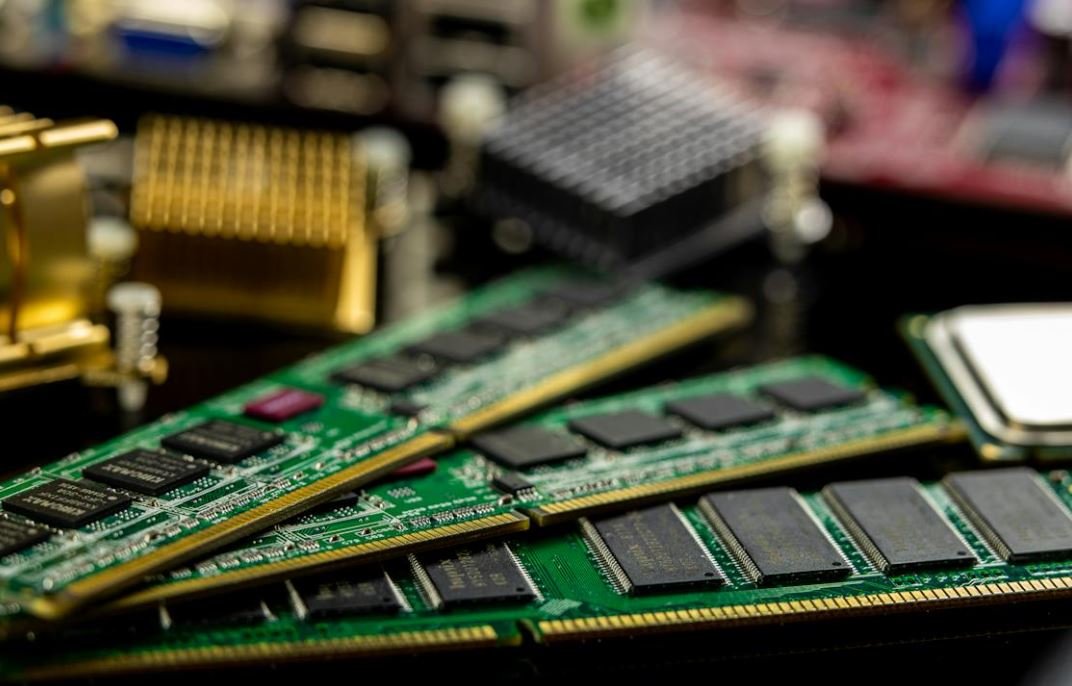Where Does Production of Sperm Occur?
The production of sperm, known as spermatogenesis, is a complex process that occurs within the male reproductive system. Understanding where this production takes place is important for overall reproductive health and fertility. Let’s explore the main sites where sperm production occurs in the male body.
Key Takeaways
- Sperm production occurs in the testes, specifically within the seminiferous tubules.
- During spermatogenesis, immature sperm cells undergo several stages of development before becoming fully mature and functional.
- The process of spermatogenesis is regulated by hormones, including testosterone and follicle-stimulating hormone (FSH).
The Testes: The Primary Site of Sperm Production
The primary location where sperm production occurs in the male reproductive system is the testes. Within the testes, there are numerous coiled tubules known as the seminiferous tubules. These tubules are lined with specialized cells called spermatogonia, which are responsible for producing immature sperm cells, also known as germ cells.
Spermatogonia undergo a series of divisions and transformations to become mature sperm cells through a process called spermatogenesis. This process typically takes around 64 to 72 days to complete.
Interestingly, each testis is divided into around 250 compartments called lobules, and each lobule contains several seminiferous tubules. This organization allows for the continuous and plentiful production of sperm throughout a man’s reproductive years.
Stages of Spermatogenesis
Spermatogenesis consists of several distinct stages, each crucial for the transformation of immature germ cells into fully mature and functional sperm cells. These stages include:
- Spermatogonial phase: This initial stage involves the division of spermatogonia to produce primary spermatocytes.
- Meiotic phase: Primary spermatocytes undergo meiosis, a specialized cell division process, resulting in the formation of haploid secondary spermatocytes.
- Round spermatid phase: Secondary spermatocytes further divide to produce round spermatids.
- Mature sperm phase: Round spermatids undergo changes in shape and structure to develop into mature sperm cells, also known as spermatozoa.
Hormonal Regulation of Spermatogenesis
The production and regulation of sperm are influenced by several hormones, primarily testosterone and follicle-stimulating hormone (FSH). Testosterone, produced by the testes, is responsible for promoting spermatogenesis and the development of male secondary sexual characteristics.
On the other hand, FSH, released by the pituitary gland, stimulates the Sertoli cells within the seminiferous tubules to support sperm development and nourishment.
Interesting Facts and Figures about Sperm
| Fact | Figure |
|---|---|
| Typical Sperm Count | 20 to 200 million sperm per milliliter of semen |
| Sperm Lifespan | Up to 5 days within the female reproductive tract |
Here are some facts and figures related to sperm that may pique your interest:
- On average, a single ejaculation can release around 150 million sperm.
- It takes approximately 2-3 months for sperm to mature and become capable of fertilizing an egg.
- Sperm cells are the smallest human cells, measuring about 0.05 millimeters in length.
The Epididymis: A Key Role in Sperm Maturation
Although sperm production primarily occurs in the testes, they are not immediately capable of fertilizing an egg. After leaving the seminiferous tubules, the immature sperm cells travel to a long, coiled structure called the epididymis, located on the back of each testicle.
The epididymis plays a crucial role in the maturation of sperm, providing them with the necessary environment and nutrients required to develop the ability to swim and fertilize an egg. This maturation process typically takes around 2 weeks to complete.
The Journey of Sperm Cells
Once sperm cells have fully matured in the epididymis, they are stored and await ejaculation. During sexual activity, contractions push the sperm from the epididymis into the vas deferens, a muscular tube that carries the sperm towards the urethra.
When a man ejaculates, the sperm, along with other fluids, travel through the urethra and are expelled from the body. If the sperm encounters an egg during sexual intercourse, it may have the opportunity to fertilize and initiate the process of human reproduction.
Now armed with this knowledge, you have gained a deeper understanding of where sperm production occurs in the male body and the intricate processes involved in creating these tiny but powerful cells.

Common Misconceptions
1. Sperm Production Occurs in the Testes Only
One common misconception about sperm production is that it occurs solely in the testes. While it is true that the majority of sperm production takes place in the testes, it is not the only site where sperm are produced. In fact, the process begins in the testes and continues in other parts of the male reproductive system.
- Sperm production starts in the testes
- Testosterone production is key for initiating sperm production
- Vas deferens carries the mature sperm to the ejaculatory ducts
2. Sperm Production Does Not Happen in the Seminal Vesicles
Another misconception is that sperm production occurs in the seminal vesicles. However, the primary function of the seminal vesicles is to secrete a significant portion of the semen, which nourishes and protects the sperm. They do not play a role in actual sperm production.
- Seminal vesicles contribute to the volume of semen
- Prostate gland also produces a fluid that makes up semen
- Combined secretions from various glands support sperm survival and transport
3. Sperm Production Occurs in the Epididymis
Contrary to popular belief, the epididymis, a long, coiled tube behind each testicle, is responsible for the final maturation and storage of sperm, rather than producing them. It serves as a temporary warehouse, allowing sperm to mature and gain the ability to swim before they are ejaculated.
- Epididymis is involved in sperm storage and maturation
- Spermatozoa can be stored in the epididymis for several weeks
- Epididymis also plays a crucial role in sperm motility development
4. Sperm Production Involves the Prostate Gland
Many people overlook the prostate gland when considering where sperm is produced. Although the prostate gland does not directly produce sperm, it contributes to the production of semen, which carries and nourishes the sperm. The prostate gland secretes a milky fluid that helps activate the sperm and prevent the premature expulsion of semen.
- Prostate gland surrounds the urethra
- Prostate fluid is alkaline to counteract acidity in the vagina
- Prostate-specific antigen (PSA) assists in maintaining sperm viability
5. Sperm Production Ends with Ejaculation
One of the most common misconceptions is that sperm production ends after ejaculation. However, the human body continuously produces new sperm cells throughout a man’s life, starting at puberty. This ongoing production ensures a constant supply of healthy sperm, allowing for fertility even in older age.
- Spermatogenesis is the term for continuous sperm production
- Sperm production can be affected by various factors including age and health
- Healthy lifestyle choices can support sperm production

Male Reproductive System
The male reproductive system is responsible for producing and delivering sperm to fertilize an egg. One of the key questions about this process is where sperm production occurs within the male body. This article explores the various locations where sperm is produced and provides interesting data and information.
1. Testes
The testes are the primary organs involved in sperm production. Located within the scrotum, their main function is to produce haploid sperm cells. On average, each testicle produces around 1,500 sperm cells per second.
| Fact | Data |
|---|---|
| Size of each testicle | About 2-3 cm in length and 2 cm in width |
| Temperature for optimal sperm production | Slightly below body temperature, around 34-35°C |
| Sperm production starts | Shortly after puberty (around 12-14 years old) |
| Sperm production rate | Approximately 100 million sperm per day |
2. Epididymis
The epididymis acts as a storage and maturation site for sperm. It is a long, coiled tube connected to each testicle that enables sperm cells to develop their motility and gain the ability to fertilize. Approximately 85-90% of sperm maturation occurs here.
| Fact | Data |
|---|---|
| Length of epididymis | Around 4-6 meters (13-20 feet) |
| Time spent in epididymis | 12-18 days |
| Epididymal sperm storage capacity | Approximately 200-600 million sperm |
| Sperm transit time through epididymis | About 2-3 weeks |
3. Vas Deferens
The vas deferens is a duct that carries mature sperm from the epididymis to the ejaculatory duct. It is an essential part of the male reproductive system responsible for transporting sperm during ejaculation.
| Fact | Data |
|---|---|
| Length of vas deferens | About 45 cm (18 inches) |
| Sperm travel time through vas deferens | Approximately 2-3 seconds per cm |
| Sperm concentration in ejaculatory duct | More than 200 million sperm per milliliter |
| Transport speed of sperm | Around 1-4 centimeters per minute |
4. Ejaculatory Duct
The ejaculatory duct is a short passageway formed by the merging of the vas deferens and the seminal vesicles. It plays a vital role in delivering sperm to the urethra during ejaculation.
| Fact | Data |
|---|---|
| Length of ejaculatory duct | About 1.5-2 centimeters |
| Sperm storage capacity of ejaculatory duct | Can house several million sperm |
| Seminal vesicles contribution | Produces about 60-70% of seminal fluid in ejaculate |
| Average ejaculatory duct diameter | Approximately 0.3-0.5 cm |
5. Prostate Gland
The prostate gland is a small, walnut-sized gland situated below the bladder that produces a significant proportion of the seminal fluid, which nourishes and protects the sperm.
| Fact | Data |
|---|---|
| Weight of the prostate gland | Approximately 20-30 grams |
| Semen volume contributed by prostate | Accounts for about 20-30% of the ejaculate |
| Number of ejaculatory ducts connected to prostate | Two (one from each side) |
| Secretions produced by the prostate | Include enzymes, citric acid, and zinc |
6. Seminal Vesicles
The seminal vesicles are two small glands located behind the bladder that produce a significant portion of the seminal fluid, contributing to sperm motility and providing nutrients.
| Fact | Data |
|---|---|
| Size of each seminal vesicle | Average length of 5-7 cm, width of 1-2 cm |
| Semen volume contributed by seminal vesicles | Contributes around 60-70% of the total ejaculate |
| Seminal fluid composition | Contains fructose, proteins, mucus, and coagulating enzymes |
| Seminal vesicles’ role | Enhancement of sperm motility and survival |
7. Bulbourethral Glands (Cowper’s Glands)
The bulbourethral glands are pea-sized glands located beneath the prostate that contribute a small amount of fluid to the semen to neutralize the acidity of the urethra. This secretion aids in lubrication during sexual intercourse.
| Fact | Data |
|---|---|
| Size of each bulbourethral gland | About 1.5 cm (0.6 inches) in length |
| Fluid volume contributed by bulbourethral glands | Approximately 5% of the total ejaculate |
| Composition of fluid produced | Composed of mucus and alkaline substances |
| Role of bulbourethral glands | Pre-ejaculate lubrication and neutralization of urethral acidity |
8. Semen
Semen is the fluid that carries sperm during ejaculation. It is a complex mixture of sperm and various secretions from the male reproductive system.
| Fact | Data |
|---|---|
| Semen volume per ejaculation | Average volume is about 2-5 milliliters |
| Sperm count per ejaculation | Varies widely, but typically between 40-600 million sperm |
| pH of semen | Usually around 7.2-7.8, slightly alkaline |
| Seminal fluid color and consistency | Can range from white to grayish or slightly yellow and has a sticky texture |
9. Urethra
The urethra is a tube that carries urine from the bladder and serves as a channel for semen flow during ejaculation in males.
| Fact | Data |
|---|---|
| Length of urethra | Average length is approximately 20 cm (8 inches) |
| Urethral sphincters | Internal and external sphincters help control urine and semen flow |
| Dual function of the male urethra | Allows for the passage of both urine and semen |
| Location of urethral meatus | In males, it is at the tip of the penis |
10. Conclusion
The process of sperm production and delivery within the male reproductive system involves various intricate stages and structures. From the testes to the urethra, each organ plays a vital role in the creation, maturation, and transportation of sperm. Understanding these aspects can help us appreciate the complexity and marvel at the biological mechanisms that contribute to human reproduction.
Frequently Asked Questions
Where Does Production of Sperm Occur?
Where does sperm production occur?
Sperm production primarily occurs in the male reproductive organs called testes.
What are testes?
The testes are a pair of male reproductive organs located in the scrotum. They are responsible for producing sperm and testosterone.
Why are the testes located outside the body?
The testes are located outside the body within the scrotum to maintain a lower temperature than the body’s core. This lower temperature is necessary for optimal sperm production.
How is sperm produced?
Sperm is produced through a process called spermatogenesis. It involves the division and maturation of germ cells within the seminiferous tubules of the testes.
What is the role of the epididymis in sperm production?
The epididymis is a long coiled tube located on the back of each testicle. It serves as a storage and maturation site for sperm, allowing them to develop motility and gain fertilization capabilities.
Can sperm production be affected by health or lifestyle factors?
Yes, various health and lifestyle factors can impact sperm production. These factors include age, hormonal imbalances, certain medications, tobacco and drug use, excessive alcohol consumption, obesity, exposure to environmental toxins, and more.
Are there any medical conditions that can affect sperm production?
Yes, medical conditions such as varicocele (enlarged veins in the scrotum), infections, genetic disorders, hormonal disorders, testicular injury, and certain autoimmune diseases can affect sperm production.
Can sperm production be improved?
In some cases, certain lifestyle changes or medical treatments can help improve sperm production. Consultation with a healthcare professional specializing in fertility or reproductive health is recommended.
Do sperm continue to be produced throughout a man’s life?
Yes, sperm production generally continues throughout a man’s life, although the quantity and quality of sperm may decline with age.
Can sperm production be tested or evaluated?
Yes, various tests such as semen analysis, hormone level evaluation, genetic testing, and imaging studies can be conducted to assess sperm production and determine potential fertility issues.




